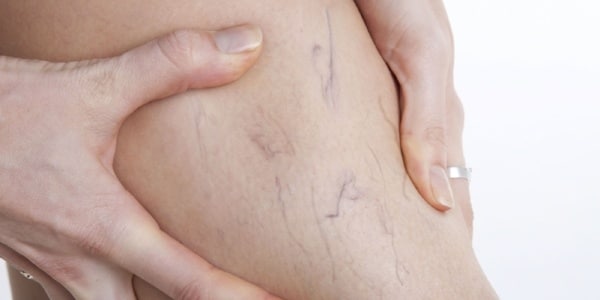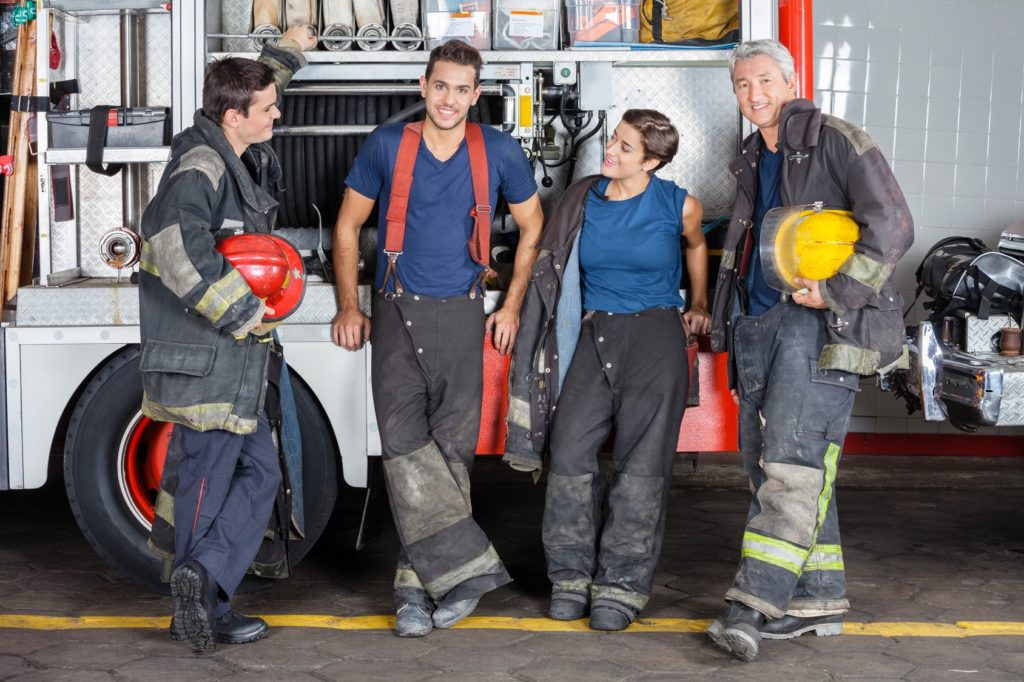
8 Common Myths About Spider Veins
There are a lot of myths and misconceptions when it comes to spider veins. So we asked Jilanne Rose, DPN, ANP-C, a top Metro Phoenix Vein Specialist, to dispel some of the more frequent misconceptions surrounding the cause, risk factors, and treatment of this common vein condition.
Myth #1: Spider Veins are Only Cosmetic
Many people believe that spider veins are unsightly but do not require treatment. Often times, there is underlying venous disease that is a much greater issue.
Myth #2: Spider Veins are Just Part of Getting Older
Although age is one of the risk factors of varicose and spider veins, it’s not the only one and is definitely not the most frequent one. The primary cause of any vein disease is hereditary. In other words, ladies and gentleman, if your mom or grandmother had varicose or spider veins, you are more likely to have them and your age is no longer relevant. In fact, vein disease can start to develop as early as your 20s, and if left untreated, varicose and spider veins will be a natural consequence. Other risk factors include female gender, pregnancy, sedentary lifestyle, being overweight, and having a history of prior leg trauma.
Myth #3: Spider Veins are Strictly a Problem for Women
Incorrect! Spider veins can happen to anyone. It is estimated that as many as 45% of all men will develop some form of venous disease by the time they reach their 60s. The number one cause of varicose veins in both men and women is family history. Lifestyle factors play a significant role as well. If your occupation requires you to stand for long periods, such as medical professionals, factory workers, first responders, sales or restaurant staff, you are more likely to get varicose veins. If you travel and spend long hours flying or driving, or if you sit at a desk for several hours at a time, you are at high risk as well.
Myth #4: Running or Standing Can Cause Spider Veins
Again, this is incorrect. In fact, running, walking or exercise is good for your veins and helps increase circulation. Prolonged standing and sitting in one position does aggravate venous disease and you will notice it more.
Myth #5: Only Overweight People get Spider Veins
Although weight may be a risk factor, a 2015 research article published in Phlebology could not directly link obesity with vein disease, so we can’t really bust that myth. Maintaining a healthy weight and lifestyle can help ease symptoms.
Myth #6: Surgery is the Only Option to Treat Spider Veins
Treatments for venous disease have taken huge leaps forward. Today, there is a range of minimally invasive, maximally effective procedures that can have you back on your feet with a much improved quality of life in very little time. Many of these procedures can be performed in a clinic, on an out-patient basis, with local anesthetic. More often than not, spider veins are treated with non-invasive or minimally invasive techniques that are nearly pain-free.
Myth #7: Vein Treatment is Painful
There was a time when leg vein surgery only referred to procedures such as vein stripping and ligations, painful procedures, likely involving general anesthetic, and definitely involving long and difficult recovery times. There are several modern procedures for varicose veins, spider veins, venous insufficiency and other vascular disease, which, cause minimal pain (if any) and have very fast recovery times. Watch this video from Jilanne Rose to learn more about what you can expect in terms of pain and recovery time .
Myth #8: Vein Treatment is Expensive and Not Covered by Insurance
Many people mistakenly believe that varicose and spider veins are only a cosmetic issue. In reality, the majority of our patients, typically have complaints that indicate an underlying venous condition such as leg pain and/or swelling, restless legs or numbing, tired legs, and leg ulcers. These are real medical problems that significantly impair activities of daily living.
After a full vein exam and ultrasound, patients find that commercial insurance carriers almost always cover vein treatment. Medicare and Medicaid will also cover vein treatment.
Additionally, the latest techniques in Sclerotherapy and Thermal Ablation, are minimally invasive and the costs are considerably lower than what you previously had to pay for a surgery.
It is best to get a complete vein exam and consultation from a qualified vein specialist in order to fully understand your specific circumstances. If you would like to find out if you are at risk of venous insufficiency in the Scottsdale, Phoenix, Mesa or Tempe area, click on the link below to book an appointment.
Varicose Veins worse in Summer Heat? If it seems like your varicose veins symptoms seem to worsen in the summer heat—especially for those of you who live in hot climates like Arizona—you are not imagining it. Talk to a qualified vein specialist and they will tell you that heat does have an effect on your…
Read MoreLet’s face it—a big part of the reason that you are in Arizona is because you don’t enjoy golfing in the snow or hiking in the rain. And now that you are here, there is no reason to let anything get in the way of your active life—not even the discomfort of varicose veins. Although…
Read MoreYounger adults in the U.S. are searching for options to deal with varicose veins…REALLY? Health and Google statistics are starting to show that younger and younger people are seeking treatment for conditions such as varicose veins, chronic venous insufficiency (CVI), and other health conditions usually associated with older adults. Health officials are attributing this…
Read MoreHas a woman ever said she loves wearing high heels because they are just so comfortable? Uh uh. Or because it is just so easy to walk in them? Not likely. High heels are popular because of the way they make the legs of the wearer appear.
Read MoreIf you just googled “compression stockings for varicose veins” to find this article, you are far from alone. Millions of Americans have looked at compression stockings as a non-surgical alternative to help deal with the discomfort of varicose veins and other peripheral vascular concerns. Perhaps not knowing that there are newer, effective, and minimally invasive procedures…
Read MoreIt can hurt to care–just ask any nurse. As a profession, nurses experience some of the highest rates of varicose veins and Chronic Venous Insufficiency (CVI) in the country. In fact, in one study by the NIH, 63 per cent of participating nurses were shown to have at least one sign of CVI. Nurses will know…
Read MoreOne might think that the biggest cause of injury among American firefighters would be burns and collapsing structures. However, more than just skin and bones, it is the firefighter’s vascular system that is at risk. There are a number of reasons why firefighters are especially susceptible to vascular injury, and why they in particular need…
Read MorePerhaps the most important thing to know about Radiofrequency Vein Ablation, is that it has a high success rate in treatment of varicose veins. Additionally, it is minimally invasive, minimally painful, has low rates of complication, can be performed in-office, and has a very rapid recovery time, usually about a day. The Venous Ablation Process…
Read MoreThe concern about having or developing Chronic Venous Insufficiency (CVI) is a great reason to have your varicose veins fully assessed by a qualified Vein Specialist. Why should I be concerned about the symptoms of Chronic Veins Insufficiency? Chronic Venous Insufficiency, also known as Venous Reflux Disease or Venous Stasis, refers to a condition of inadequate…
Read MoreCan Varicose Vein Pain be Eliminated? It is the end of a long day, and suddenly you realize that the varicose veins that you barely considered this morning are working hard to get your attention. They ache, and your legs feel heavy and are getting swollen. Especially if you have been ignoring them all day,…
Read More

